Abstract
Sporulation of Bacillus megaterium Km (ATCC 13632) was synchronized by a technique employing three 10% transfers. The culture was harvested when 60% of the cells contained spore forms. Dihydrodipicolinic acid synthetase was purified 150-fold by ammonium sulfate fractionation at pH 6.5, heating for 15 min at 45 C at pH 6.0, ammonium sulfate fractionation at pH 6.0, and subsequent chromatography on diethylaminoethyl cellulose. During the final stage of the purification procedure, the enzyme exhibited sensitivity to refrigeration temperatures. The enzyme had a pH optimum of 7.65 in imidazole buffer. The apparent Km values were 4.6 × 10−4 and 5.0 × 10−4m for β-aspartyl semialdehyde and pyruvate, respectively. All attempts to demonstrate cofactor requirements were unsuccessful. Sulfhydryl inhibiting reagents and lysine did not inhibit the enzymatic reaction. The enzyme exhibited maximal thermal resistance at pH 10.5. The thermal stability of the enzyme at 75 C was increased more than 1,800-fold by the addition of 0.3 m pyruvate. The Ea was 67,300 cal/mole for the thermal denaturation of the enzyme. At 60 C, the ΔF, ΔH, and ΔS values for the thermal denaturation of the enzyme were 22,250, 66,700, and 133 cal per mole per degree, respectively.
Full text
PDF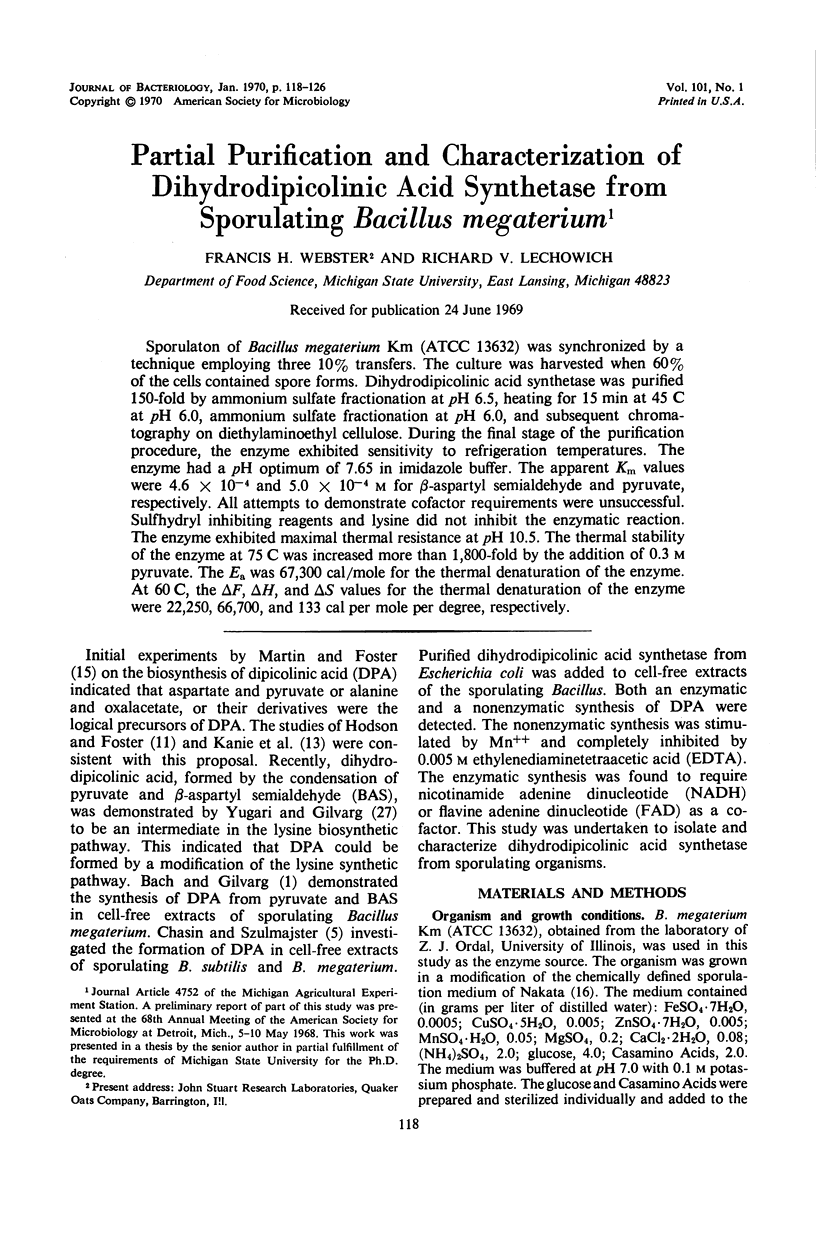
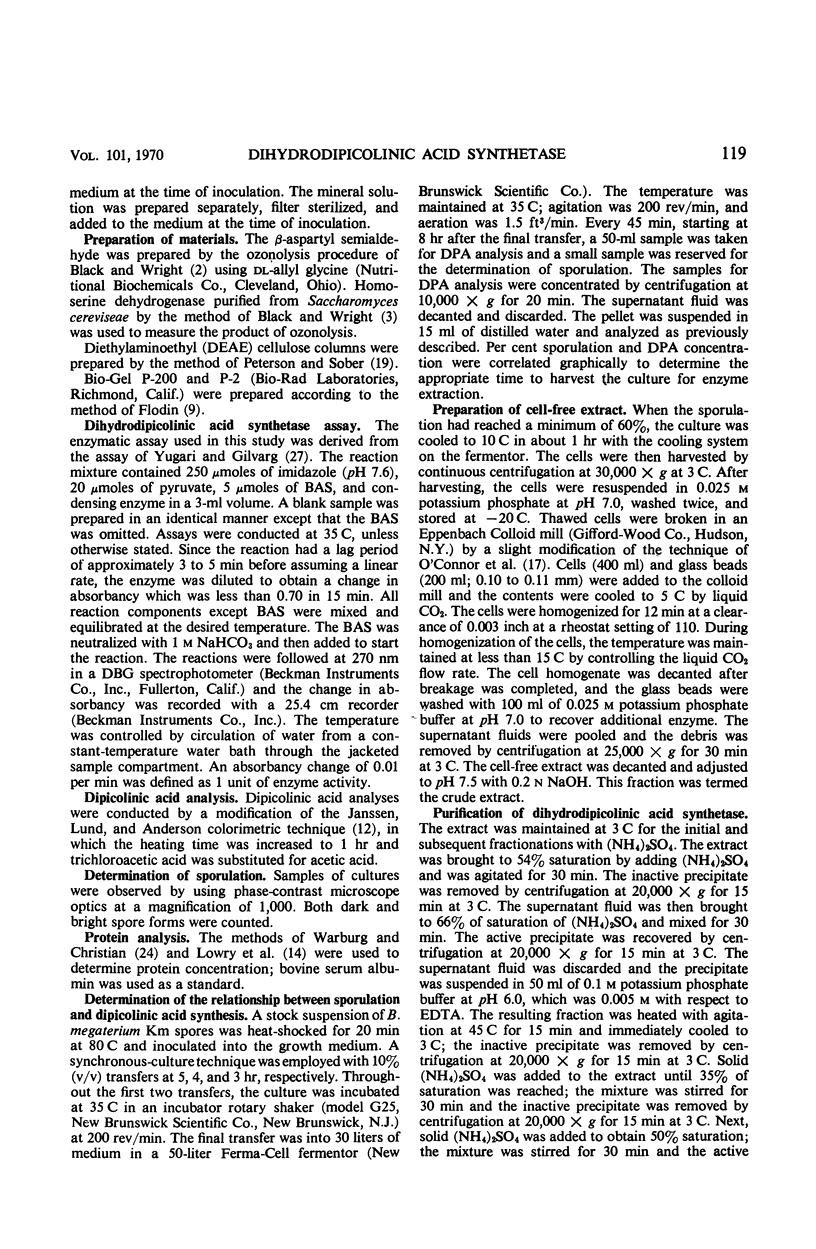

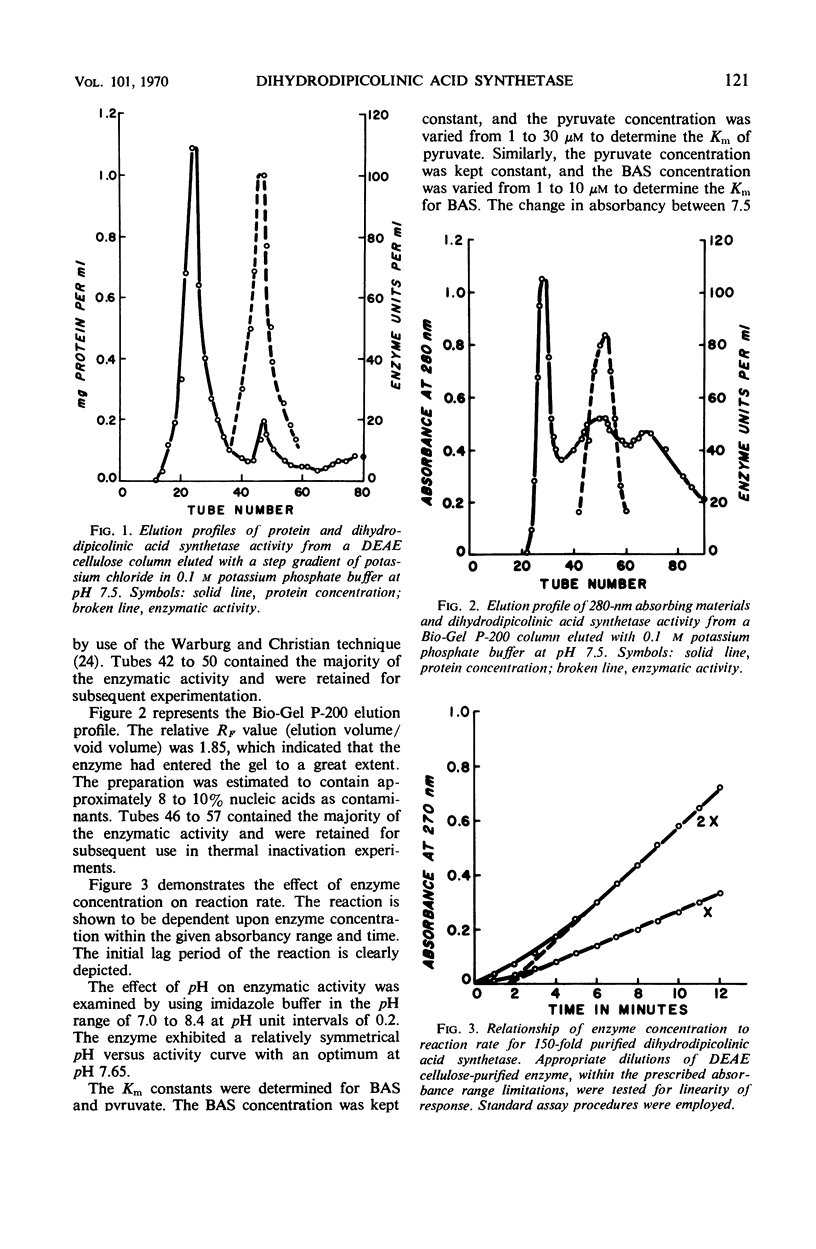
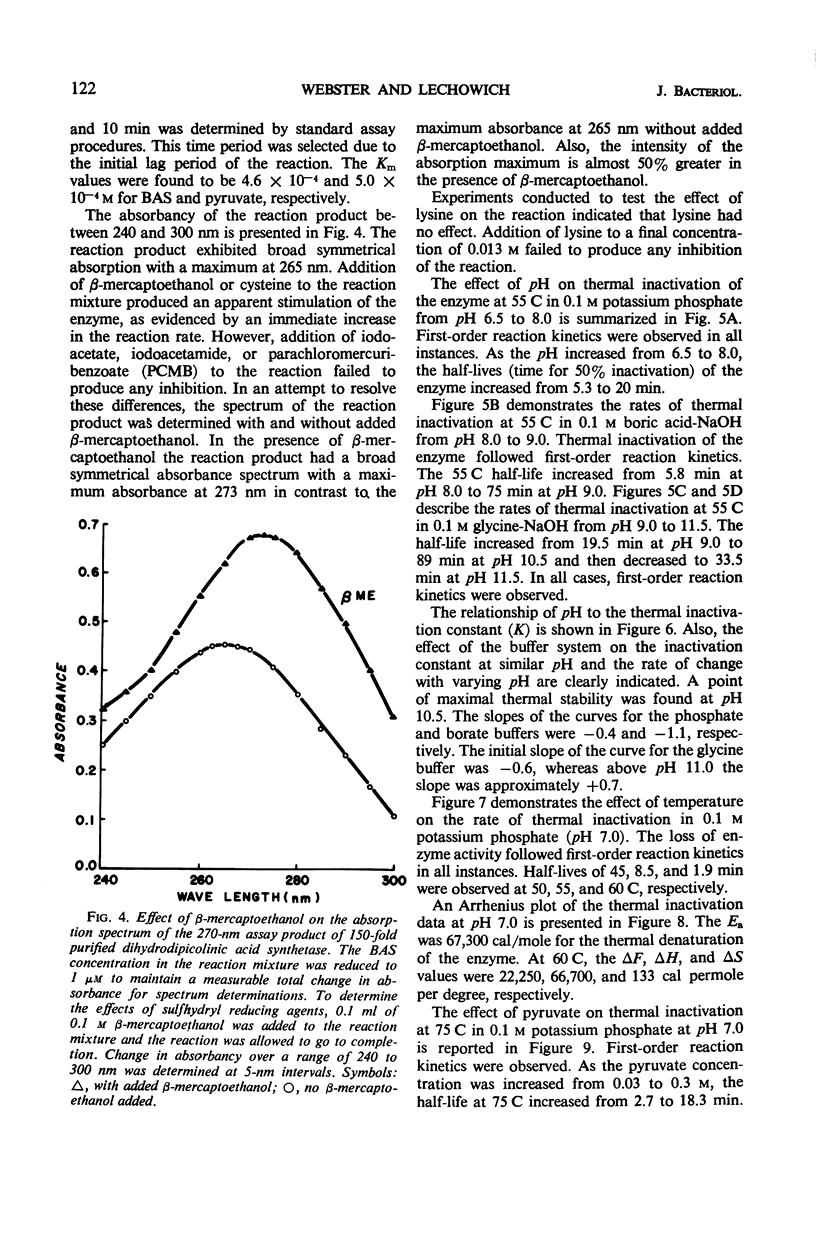
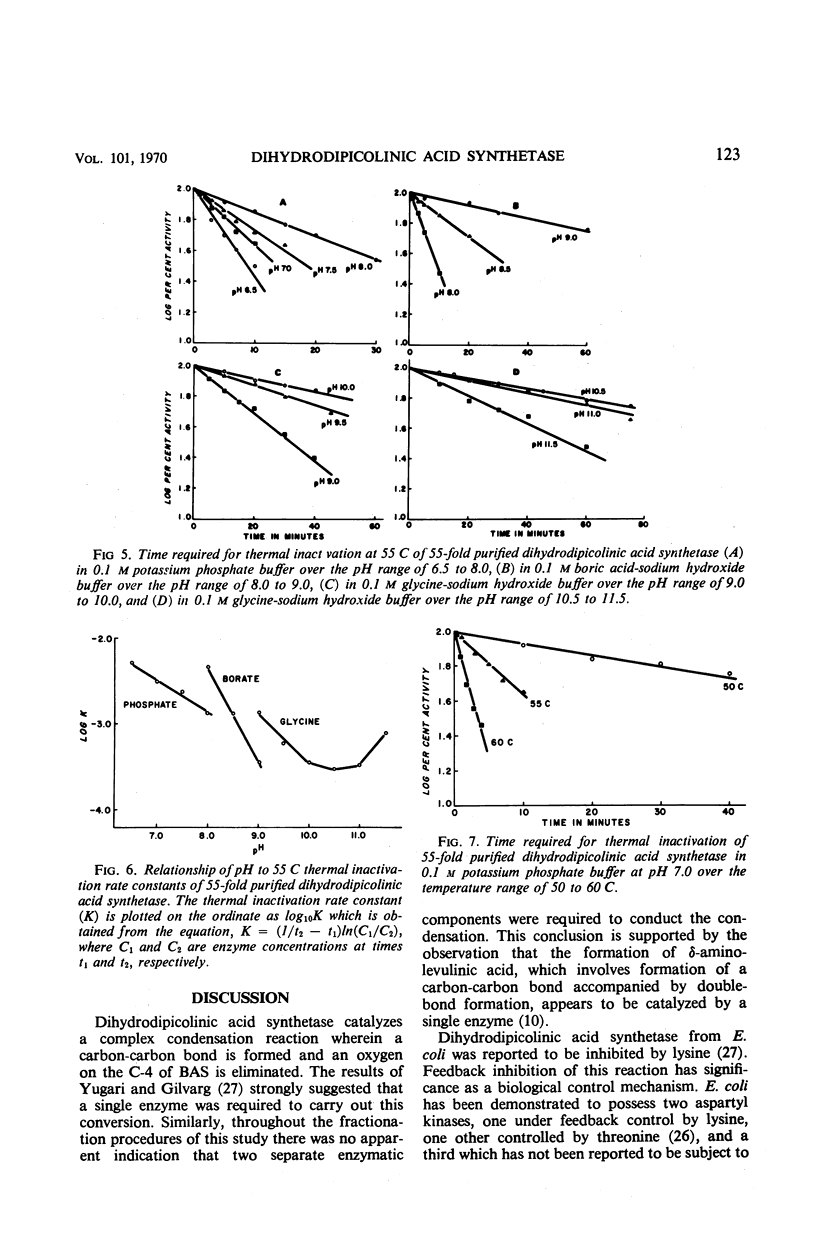
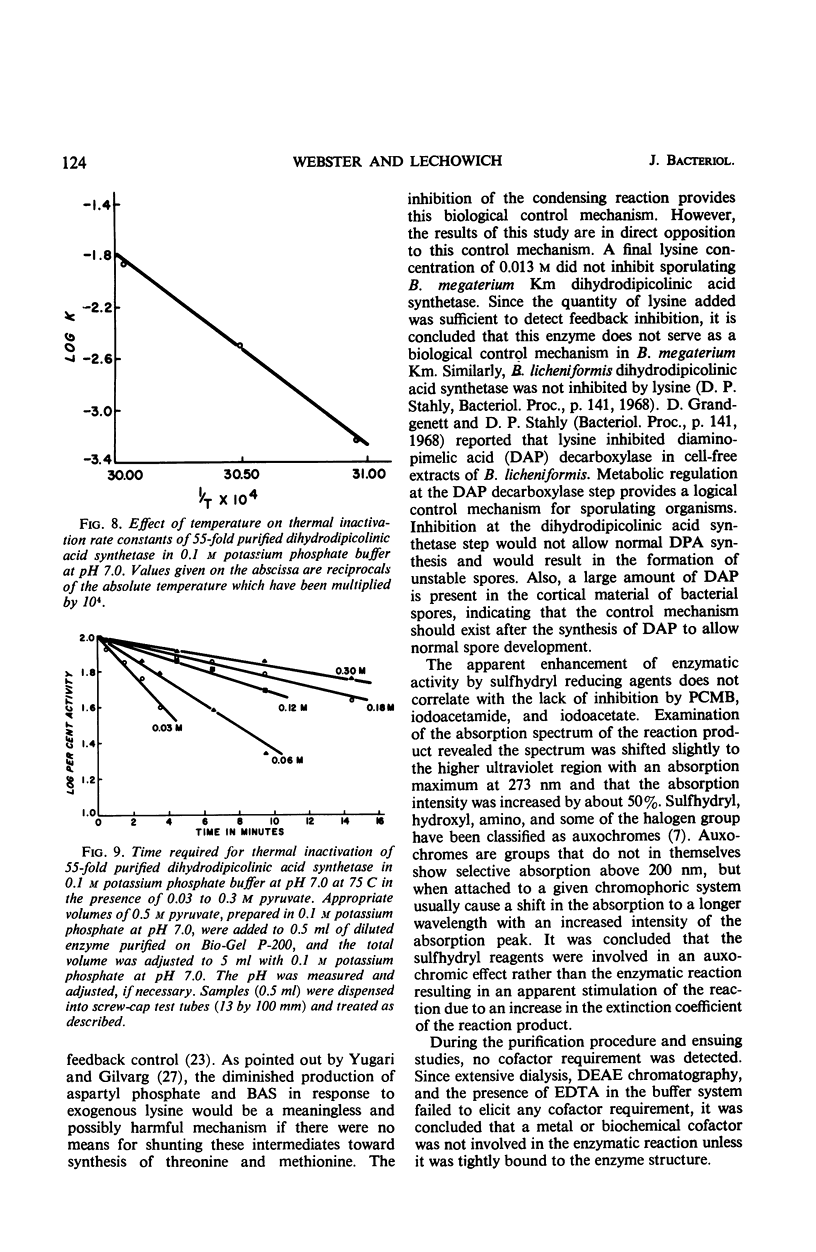
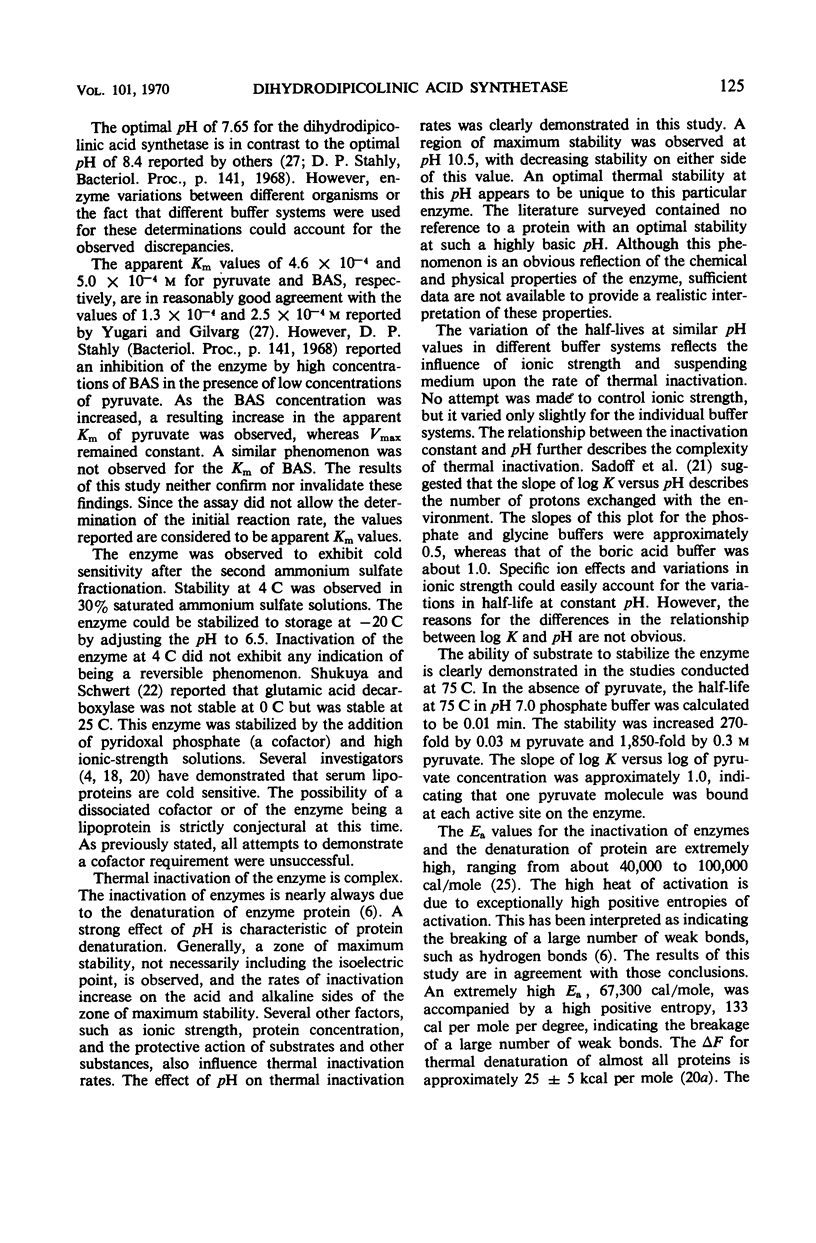
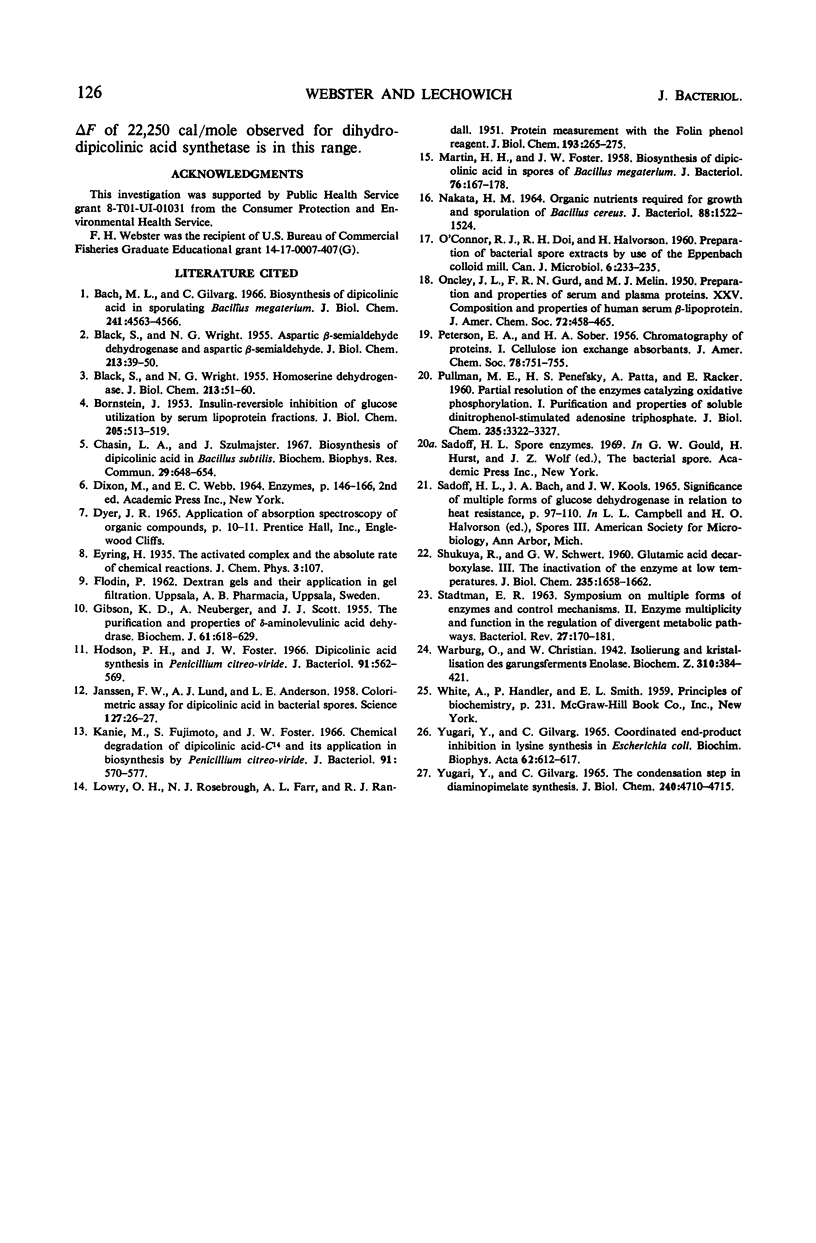
Selected References
These references are in PubMed. This may not be the complete list of references from this article.
- BLACK S., WRIGHT N. G. Aspartic beta-semialdehyde dehydrogenase and aspartic beta-semialdehyde. J Biol Chem. 1955 Mar;213(1):39–50. [PubMed] [Google Scholar]
- BLACK S., WRIGHT N. G. Homoserine dehydrogenase. J Biol Chem. 1955 Mar;213(1):51–60. [PubMed] [Google Scholar]
- BORNSTEIN J. Insulin-reversible inhibition of glucose utilization by serum lipoprotein fractions. J Biol Chem. 1953 Nov;205(1):513–519. [PubMed] [Google Scholar]
- Bach M. L., Gilvarg C. Biosynthesis of dipicolinic acid in sporulating Bacillus megaterium. J Biol Chem. 1966 Oct 10;241(19):4563–4564. [PubMed] [Google Scholar]
- Chasin L. A., Szulmajster J. Biosynthesis of dipicolinic acid in Bacillus subtilis. Biochem Biophys Res Commun. 1967 Dec 15;29(5):648–654. doi: 10.1016/0006-291x(67)90265-3. [DOI] [PubMed] [Google Scholar]
- GIBSON K. D., NEUBERGER A., SCOTT J. J. The purification and properties of delta-aminolaevulic acid dehydrase. Biochem J. 1955 Dec;61(4):618–629. doi: 10.1042/bj0610618. [DOI] [PMC free article] [PubMed] [Google Scholar]
- Hodson P. H., Foster J. W. Dipicolinic acid synthesis in Penicillium citreo-viride. J Bacteriol. 1966 Feb;91(2):562–569. doi: 10.1128/jb.91.2.562-569.1966. [DOI] [PMC free article] [PubMed] [Google Scholar]
- JANSSEN F. W., LUND A. J., ANDERSON L. E. Colorimetric assay for dipicolinic acid in bacterial spores. Science. 1958 Jan 3;127(3288):26–27. doi: 10.1126/science.127.3288.26. [DOI] [PubMed] [Google Scholar]
- Kanie M., Fujimoto S., Foster J. W. Chemical degradation of dipicolinic acid-C14 and its application in biosynthesis by Penicillium citreo-viride. J Bacteriol. 1966 Feb;91(2):570–577. doi: 10.1128/jb.91.2.570-577.1966. [DOI] [PMC free article] [PubMed] [Google Scholar]
- LOWRY O. H., ROSEBROUGH N. J., FARR A. L., RANDALL R. J. Protein measurement with the Folin phenol reagent. J Biol Chem. 1951 Nov;193(1):265–275. [PubMed] [Google Scholar]
- MARTIN H. H., FOSTER J. W. Biosynthesis of dipicolinic acid in Bacillus megaterium. J Bacteriol. 1958 Aug;76(2):167–178. doi: 10.1128/jb.76.2.167-178.1958. [DOI] [PMC free article] [PubMed] [Google Scholar]
- NAKATA H. M. ORGANIC NUTRIENTS REQUIRED FOR GROWTH AND SPORULATION OF BACILLUS CEREUS. J Bacteriol. 1964 Nov;88:1522–1524. doi: 10.1128/jb.88.5.1522-1524.1964. [DOI] [PMC free article] [PubMed] [Google Scholar]
- PULLMAN M. E., PENEFSKY H. S., DATTA A., RACKER E. Partial resolution of the enzymes catalyzing oxidative phosphorylation. I. Purification and properties of soluble dinitrophenol-stimulated adenosine triphosphatase. J Biol Chem. 1960 Nov;235:3322–3329. [PubMed] [Google Scholar]
- SHUKUYA R., SCHWERT G. W. Glutamic acid decarboxylase. III. The inactivation of the enzyme at low temperatures. J Biol Chem. 1960 Jun;235:1658–1661. [PubMed] [Google Scholar]
- STADTMAN E. R. Symptosium on multiple forms of enzymes and control mechanisms. II. Enzyme multiplicity and function in the regulation of divergent metabolic pathways. Bacteriol Rev. 1963 Jun;27:170–181. doi: 10.1128/br.27.2.170-181.1963. [DOI] [PMC free article] [PubMed] [Google Scholar]
- YUGARI Y., GILVARG C. Coordinate end-product inhibition in lysine synthesis in Escherichia coli. Biochim Biophys Acta. 1962 Aug 27;62:612–614. doi: 10.1016/0006-3002(62)90256-1. [DOI] [PubMed] [Google Scholar]
- Yugari Y., Gilvarg C. The condensation step in diaminopimelate synthesis. J Biol Chem. 1965 Dec;240(12):4710–4716. [PubMed] [Google Scholar]


